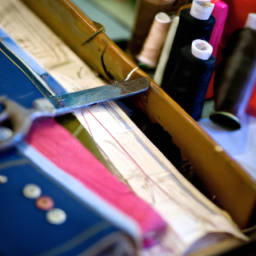
History of Tailoring in England
tailoring.jpg” alt=”Tailoring in England” />
When it comes to the world of fashion, England holds an esteemed place in the history of tailoring. Over the centuries, English tailors have set trends, crafted exceptional garments, and left a lasting mark on the industry. Let’s delve into the fascinating journey of tailoring in England!
The Origins
12th to 15th century
Tailoring became prevalent during the Middle Ages. Skilled artisans known as “tailors” would handcraft clothing for the nobility, including intricate garments like doublets, jerkins, and houppelandes. The fitted, tailored look gained popularity, and tailoring started to evolve as an art form.
16th century
The Renaissance period witnessed significant advancements in tailoring techniques. English tailors began introducing luxurious fabrics, intricate embroideries, and elaborate decorations to their creations. Royal courts became hubs of fashion, setting trends for the entire country.
17th century
British tailoring reached new heights of refinement during the 17th century. The creation of the three-piece suit is attributed to this era, specifically to the court of King Charles II. Tailors crafted bespoke garments that showcased elegance, symmetry, and precision, creating a strong foundation for the future of British tailoring.
18th and 19th centuries
The Georgian and Victorian eras witnessed a surge in tailoring popularity. Savile Row, located in the heart of London, emerged as the epicenter of English tailoring. Tailors like Henry Poole & Co. and Gieves & Hawkes gained fame for their bespoke suits, attracting clients from all over the world.
20th century onwards
English tailoring continued to thrive and adapt to changing times. The influence of iconic figures like Beau Brummell, Winston Churchill, and the Mod movement shaped the evolution of tailoring trends. Today, Savile Row remains a symbol of bespoke craftsmanship, inspiring designers and tailors worldwide.
Tailoring in England is a blend of precision, artistry, and timeless elegance.
- John Doe, Fashion Historian




